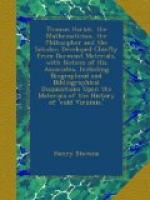Ribault, on leaving Port Royal, intended to explore up the coast to 40°, that is, to the present site of New York, but gives various reasons for not doing so, one of which was ’the declaration made vnto vs of our pilots and some others that had before been at some of those places where we purposed to sayle and have been already found by some of the king’s subjects.’ This little colony of Port Royal, after nearly a year of danger and privation, built a ship and put to sea, hoping to reach France. After incredible sufferings, they were relieved by an English ship, which, after putting the feeble on shore, carried the rest to England, having on board a French sailor who had come home the previous year with Ribault. These surviving colonists were all presented to Queen Elizabeth, and attracted much attention and great sympathy in England. Some found their way back to France, while others entered the English service. Thus England became acquainted with the aim, object, success, and failure of the first Florida (now South Carolina) Protestant French colony. Thomas Hacket published in London the 30th of May 1563, Ribault’s ‘True and last Discouerie of Florida,’ purporting to be a translation from the French; but no printed French original is now known to exist.
The year of bigotry, 1563, in France having passed, a second expedition of three vessels under Réné de Laudonnière, who had been an officer under Ribault in 1562, sailed for Florida from Havre, April 22, 1564, and arrived at the river of May the 25th of June. There were men of courage and consequence in this company of adventurers, among whom was Le Moyne, the painter and mathematician. The story of the sufferings of this second colony has often been told, and need not be repeated here. Suffice it to say that it was greatly relieved in July 1565, by Captain John Hawkins on his return voyage from his second famous slave expedition to Africa and the West Indies. Hawkins, after generously relieving the French with food, general supplies, and friendly counsel, returned to Devonshire, sailing up the coast to Newfoundland, and thence home, bringing stores of gold, silver, pearls, and the usual valuable merchandize of the Indies, but the store of information respecting Florida and our Protestant friends, and especially the geography of the American coast, was worth more to England than all his vast store of merchandize.
In 1565 a third French expedition was fitted out, again under Ribault, to supply, reinforce, and support Laudonnière. After many disappointing and vexatious delays, Ribault, late in the season, put to sea, but by stress of weather was forced into Portsmouth, where he remained a fortnight. This gave England still more information respecting the French Protestant projects of southern colonization, as well as of Florida, which at that time extended very far north of its present limits. At length on the 14th of June Ribault left the hospitable shores of England with a fair north east wind to waft his seven ships, freighted with above three hundred colonists including sailors and soldiers, and taking the new ’ French route’ north of the Azores and south of Bermuda, entered the river of May on the 27th of August, just one month after the departure of Hawkins, and just one day before the arrival of the Spaniards at the river of St John, a few miles south.




